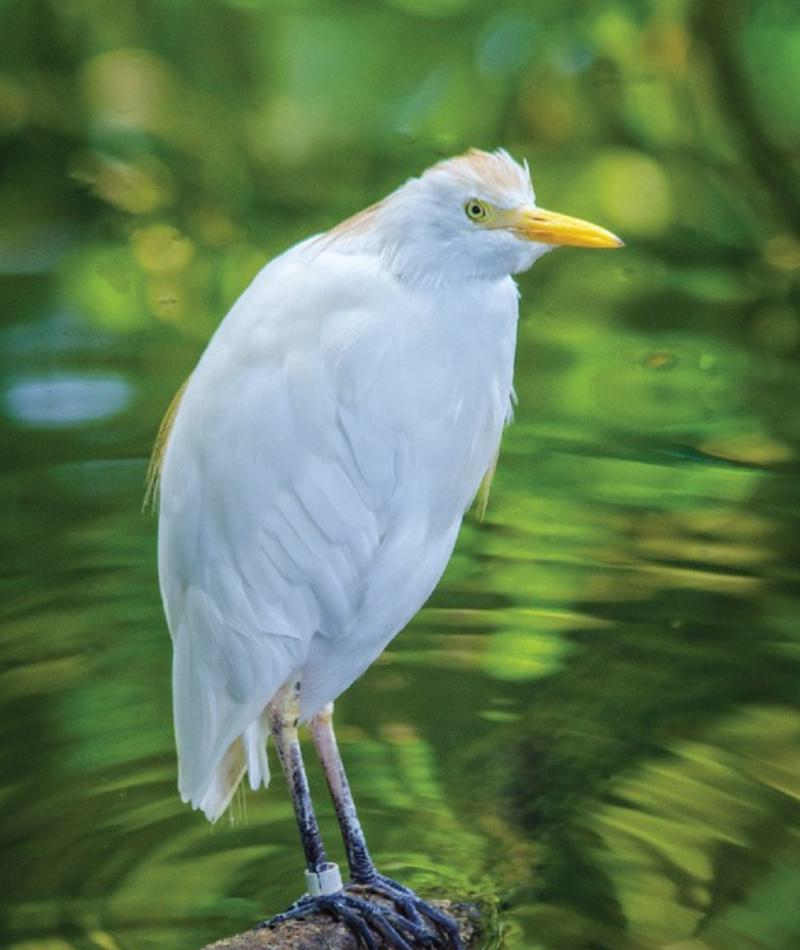
Cattle Egret
Bubulcus ibis
Did you know?
- Cattle egrets are mostly white, but during breeding season, they sport a brownish crown and chest. Adults have yellow or orange legs and bills.
- They are very social birds, gathering in large colonies.
- Males attract females by stretching their necks, raising their plumes and swaying side to side.
- Females typically lay three or four eggs.
- Both parents feed their young by regurgitation (spitting out food).
Farm Fowl
The birds' name comes from their habit of eating insects off the backs of cattle. They also eat insects that are kicked up by the movements of livestock and other large animals. In some regions, the egrets even learn to follow large farm machinery to catch the insects they flush out of hiding!
Land Lover
Cattle egrets are the least aquatic members of the heron family. Though they do occur in wetlands, they are frequently found near wet pastures and on ranches and farms that have plentiful livestock.
Threat Level
- Unknown
- Common
- Near Threatened
- Threatened
- Endangered
- Critically Endangered
- Extinct in the Wild
Common
The Cattle Egret is widespread and abundant.
Range
Mediterranean region, Near East, Africa, North and South America, West Indies, southeastern Asia, Pacific islands, Australia
Habitat
Flooded fields, grasslands, farmlands, wet pastures

We care about cattle egrets
The Saint Louis Zoo supports cattle egrets at the Cypress Swamp. Learn more about how we are helping wildlife around the world.
Find this animal in Historic Hill

SAINT LOUIS ZOO ZONE
Historic Hill
Historic Hill is a lovely stroll through one of the oldest parts of the Saint Louis Zoo. From the 1904 World’s Fair Flight Cage to the Spanish architectural flavor of the 1920s in the Bird House, Primate House and Herpetarium to the finishing touches of our thoroughly modern exhibits, this area of the Zoo has a unique ambiance and a nostalgic history that make it a great destination.

